How Well Do You Know Speaker Tech Terms?
I was thinking that some of my readers might like to test their knowledge of speaker design and terminology. I decided to put a little test together for your enjoyment.
Back in 1972 I was working for a company called California HiFi Warehouse, which was a major audio chain back then. FYI, the year after I quit to open Northridge Audio Center, CHFW changed their name to Circuit City. At times I’ve regretted my choice to leave, as I would probably be a lot better off financially had I stayed. But I have always described myself as the “Corporate Anti-Christ” and just never fit well in that type of environment.
I was young and ambitious and thought that, since I was going to have to hire new employees, I needed a way to know how much they actually knew. So, with the help of an old friend, we put together a 6-page exam testing every area of HiFi knowledge. I originally thought I would use that exam for this article, but after looking at it I decided, though basically still sound (excuse the pun), it needed some updating. I also decided that I would concentrate on one subject area at a time and if you, my readers, find it interesting or hopefully challenging, I can expand it in other areas.
For this excerpt I decided to concentrate on just speaker terms. Let me know what you think and if it seems interesting, I will do additional tests. There will be an answer sheet somewhere on the Dagogo site – I will leave it to Constantine to decide where he wants to put it. Please get back to me with your questions and comments.
Get your pen and paper out and please don’t cheat. Read each question carefully. Good Luck!
- An Acoustic Suspension Speaker:
A) is a sealed or closed box speaker enclosure.
B) is not called an infinite baffle.
C) is amore efficient design.
D) was developed by Klipsch Speaker systems.
- Bipole
A) is related specifically to 4-way speaker designs.
B) is a speaker design that generates equal amounts of sound both forward and backward.
C) has the two sounds being “out of phase” forward and back.
D) can only be a ribbon design.
- Damping Factor
A) is a measurement of how quickly the amplifier can stop a reproduced frequency of a woofer.
B) is a measure of overhang distortion.
C) has no effect on loudspeakers
D) is measurable in dBs.
- Harmonic Distortion
A) is harmonics artificially added by an electrical circuit or speaker.
B) is expressed in dBs.
C) is only measured in amplifiers.
D) is only found above 10kHz.
- A Crossover Network is
A) electronics used to channel sound across a large room
B) used to separate frequencies in a speaker system.
C) used to combine frequencies for a speaker.
D) an absolute necessity in a speaker design.
- Sealed Enclosures
A) are airtight enclosures that completely isolate the back wave of the driver from the front.
B) are difficult to design and build.
C) have low frequency roll-off at -12 dB/octave.
D) are higher efficient than other designs, and higher distortion levels at resonance.
- Transmission Line Enclosures
A) are designs in which the driver is at one end of a sealed folded horn enclosure, with an internal path consisting of a series of bends or curves.
B) the path length is a fraction of the wavelength at low frequencies.
C) is a standardized method for configuring enclosures that engineers all agree upon.
D) are one of the most difficult enclosures to design and build, and much experimentation may be necessary to get things right. “Labyrinths” and “Tapered (Stuffed) Pipes” are both variants of this type of enclosure.
- Single Reflex Bandpass Enclosure
A) is sometimes called a 2nd order bandpass.
B) is a design where the driver is completely “buried” in the enclosure, mounted in a sealed chamber and firing into a second ported chamber with the sound emanating from one or more ports.
C) band-pass enclosures pass only a broad range of frequencies, requiring the need for crossovers in the circuit.
D) in a typical single reflex bandpass, the cutoff rate below and above the “pass-band” is at a rate of -36dB/octave. Often referred to as a brick wall circuit.
- Ported Enclosure or Bass Reflex
A) is a type of speaker enclosure that uses a duct or port to reduce efficiency at low frequencies.
B) excellent design for lower power systems, as the port often adds up to +3 dB to low frequency efficiency.
C) reduces transient response with tuning, although the driver loses damping below the tuning frequency.
D) excellent power handling, but source material or frequencies above 50Hz cause the driver to progressively perform as if it were not enclosed at all.
- Passive Fourth Order Crossover
A) uses inductors (coils) and capacitors to direct proper frequencies to appropriate drivers.
B) = 4 components @ -24 dB/octave slope.
C) = 1 component @ -6 dB/octave slope
D) both A and B are true.
- Maximum Power Rating
A) a value that means almost nothing but is used nonetheless by manufacturers to entice the unsuspecting into purchasing their product based solely on the big number.
B) is the maximum wattage that an audio component can deliver.
C) most reputable manufacturers will provide Max power rating.
D) all three answers are not true.
- Passive Radiator
A) a device that looks just like an ordinary driver, except it has no magnet or voice coil.
B) a radiator is usually a highly compliant device, with a similar cone material and surround found on regular active drivers.
C) a clear advantage of the radiator is the absence of port noise, and some audiophiles claim the radiator provides a better sounding bass than a ported enclosure.
D) A and B are true, but C is not.
- Surround (suspension)
A) is designed to limit the excursion of voice-coil.
B) the outer suspension of a speaker cone.
C) holds the speaker diaphragm during assembly, then removed.
D) usually made of cloth, foam or rubber, but never made of paper.
- Phase
A) if your speakers are “out of phase” you’ll hear significantly less bass, and instead of producing a strong center image, the sound tends to stay localized at the speakers.
B) means that the drivers (cones and domes) of your right and left speakers are moving in and out at the same time.
C) refers to the timing relationship of two or more signals or soundwaves.
D) A, B and C are correct.
- Isobaric Enclosure
A) a very small enclosure with increased speaker efficiency.
B) less efficient than other designs, but the push-pull configuration increases second order harmonic distortion.
C) the name isobaric comes from a term that means “isolated pressure.”
D) an enclosure where one woofer is buried in the enclosure and a second is mounted up against the first and wired in reverse polarity.
- Decibel (dB)
A) is a linear scale used to denote a change in the relative strength of an electric signal or acoustic wave.
B) a doubling of electrical power only yields an increase of +3 dB. Increasing the power tenfold will yield an increase of +10 dB and is a doubling of perceived loudness.
C) an absolute measurement indicating the relationship or ratio between two signal levels; anything greater than about 192 dB represents the threshold for pain.
- Electrostat
A) the latest breakthrough in speaker design. Developed by Martin Logan in the 1990s.
B) a thin flat diaphragm usually consisting of a plastic sheet coated with a conductive material such as graphite sandwiched between two electrically conductive surfaces
C) the larger the air gap the higher the speaker output.
D) noted as a very high effect speaker design.
- Satellite speakers
A) are speakers that are not connected with wires
B) are speakers designed to produce sound above 500Hz
C) a small speaker with limited bass response, often designed to be used with a matching subwoofer.
D) can never be a full range design.
- Band-Pass Enclosure
A) is a type of enclosure only used for subwoofers
B) is an enclosure where the driver is completely inside the enclosure and all of the output emerges through a port(s).
C) this configuration is usually designed for low output volume with importance of accuracy/fidelity being less emphasized.
D) consists of multiple drivers in a push pull arrangement.
- Inductor
A) is the capability of a coil to store energy in a speaker driver.
B) used to maintain proper phase in a crossover network.
C) commonly used in audio as high pass crossovers.
D) is a passive two-terminal electrical component that stores energy in a magnetic field.
- Diaphragm
A) can only be made of paper or aluminum.
B) is the only non-moving part of a speaker
C) never has a dome shape.
D) the part of a dynamic loudspeaker attached to the voice coil that moves and produces the sound.
- Dome Tweeters
A) are only found in sealed speaker enclosures.
B) a high frequency speaker driver with a dome-shaped diaphragm usually made of metal or silk.
C) typically do not ring in the audible range of 6k to 10k
D) are never concave.
- Three-way
A) always consists of only three speakers.
B) cannot be bi-wired
C) a type of speaker system composed of three ranges of speakers, specifically a woofer, midrange, and tweeter.
D) are never open baffle designs.
- Sound Stage
A) all of the following are true.
B) a good speaker will faithfully make the stage seem close to the actual height, width and depth of the actual performance stage where recorded.
C) imaging is similar, but the instrument or voice location is not critical.
D) the reproduction of the way the music would sound if you were actually sitting where musicians are located.
- Polarity
A) polarity of the incoming audio signal determines the direction of movement of the speaker cone.
B) the orientation of magnetic or electric fields is not critical to speaker performance.
C) must be observed when wiring speakers, so that they are “in phase”.
D) both A and C are correct.
- Horn
A) a speaker design using its own funnel shaped conduit to amplify, disperse, or modify the sounds
B) an early speaker design now considered obsolete.
C) in most cases, these types of speakers should be avoided in home audio.
D) can handle more power than other speaker designs.
- Resistance
A) the heavier the gauge of wire, the greater the DC series resistance (DCR).
B) the lower the resistance the better the speaker.
C) is measured in gauss/watt.
D) in electrical or electronic circuits, a characteristic of a material that opposes the flow of electrons.
- Capacitor
A) like a resistor, an ideal capacitor can also dissipate energy.
B) is basically a pair of out of phase resistors storing signal.
C) a charge storage device made up of two metallic plates separated by a dielectric, with equal but opposite charges.
D) acts as a short circuit in crossover applications.
- Sound Pressure Level (SPL)
A) when you double the distance, there will be a 10db loss in SPL.
B) when you double the power, there will be a 3db gain in SPL
C) the loudness of an acoustic wave stated in dB that is inversely proportional to the logarithm of its intensity.
D) A 40 dB SPL is twice as loud as a 20 dB SPL.
- Transmission Line Enclosure
A) is a non-resonant loudspeaker enclosure design.
B) the phase relationship between the bass driver and vent is in phase in the pass band until the frequency approaches the quarter wavelength, when the relationship reaches 90 degrees.
C) requires woofers with a high Q (typically above 2.5 works best).
power handling is generally much more than in other designs of enclosure.
True or False Questions:
- T___ F___ Ohm is a unit of electrical resistance or impedance
- T___ F___ Resonant Frequency is the frequency at which the speaker tends to vibrate most.
- T___ F___ Impedance – dependent on frequency, it is the AC equivalent of resistance in a DC circuit.
- T___ F___ Spider – the flexible material that supports the former, voice coil, and inside portion of the cone within the speaker frame.
- T___ F___ A driver with a high efficiency rating needs a larger box to play a lower frequency than a driver with a lower efficiency rating.
- T___ F___ Sensitivity is the sound pressure level measured off axis at a given distance (usually 1 meter) produced by a given amount of power (usually 1 watt) to determine frequency accuracy.
- T___ F___ Treble (highs) – the upper end of the audio spectrum reproduced by tweeters, usually 3 – 4 kHz and up.
- T___ F___ Speaker placement in a room should be 12 to 14” above ear level.
- T___ F___ Bi-amping is an extension of bi-wiring in that a separate amplifier is utilized for each of the two sets of connectors from the crossover.
- T___ F___ Speaker wire is speaker wire, as long as the gauge is the same there is no difference in performance.
- T___ F___ Air suspension speakers were developed by Acoustic Research.
- T___ F___ Imaging is the speaker’s ability to localize different instruments playing simultaneously.
- T___ F___ Transient response is only important is bass speakers.
- T___ F___ Diffraction – a change in the direction of a wave that is caused by the wave moving past or hitting an obstacle.
- T___ F___ Anechoic chambers are acoustically reverberant at specific frequencies.
- T___ F___ Ribbon Speaker – A ribbon speaker consists of a thin metal-film ribbon suspended in a magnetic field. The electrical signal is applied to the ribbon, which moves with it to create the sound.
- T___ F___ Dolby Atmos is a new technology requiring separate speakers for Atmos channels that cannot be physically attached to the main speakers.
- T___ F___ Phase Distortion is a type of audible distortion caused by time delay between various parts of the signal.
- T___ F___ Below the resonant frequency, sealed subwoofers typically feature a shallow roll-off of 12dB/octave, which also corresponds with relatively low levels of group delay and ringing in the deep bass.
- T___ F___ Dispersion is the spreading of sound waves as they leave a speaker.
Answers on Page 2





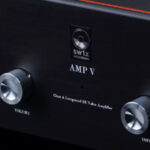
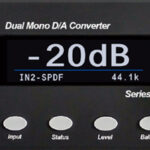
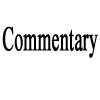
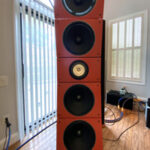
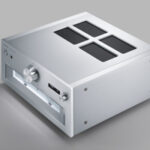
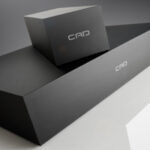

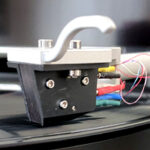
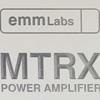


How Well Do You Know Speaker Tech Terms?
I was thinking that some of my readers might like to test their knowledge of speaker design and terminology. I decided to put a little test together for your enjoyment.
Back in 1972 I was working for a company called California HiFi Warehouse, which was a major audio chain back then. FYI, the year after I quit to open Northridge Audio Center, CHFW changed their name to Circuit City. At times I’ve regretted my choice to leave, as I would probably be a lot better off financially had I stayed. But I have always described myself as the “Corporate Anti-Christ” and just never fit well in that type of environment.
I was young and ambitious and thought that, since I was going to have to hire new employees, I needed a way to know how much they actually knew. So, with the help of an old friend, we put together a 6-page exam testing every area of HiFi knowledge. I originally thought I would use that exam for this article, but after looking at it I decided, though basically still sound (excuse the pun), it needed some updating. I also decided that I would concentrate on one subject area at a time and if you, my readers, find it interesting or hopefully challenging, I can expand it in other areas.
For this excerpt I decided to concentrate on just speaker terms. Let me know what you think and if it seems interesting, I will do additional tests. There will be an answer sheet somewhere on the Dagogo site – I will leave it to Constantine to decide where he wants to put it. Please get back to me with your questions and comments.
Get your pen and paper out and please don’t cheat. Read each question carefully. Good Luck!
A) is a sealed or closed box speaker enclosure.
B) is not called an infinite baffle.
C) is amore efficient design.
D) was developed by Klipsch Speaker systems.
A) is related specifically to 4-way speaker designs.
B) is a speaker design that generates equal amounts of sound both forward and backward.
C) has the two sounds being “out of phase” forward and back.
D) can only be a ribbon design.
A) is a measurement of how quickly the amplifier can stop a reproduced frequency of a woofer.
B) is a measure of overhang distortion.
C) has no effect on loudspeakers
D) is measurable in dBs.
A) is harmonics artificially added by an electrical circuit or speaker.
B) is expressed in dBs.
C) is only measured in amplifiers.
D) is only found above 10kHz.
A) electronics used to channel sound across a large room
B) used to separate frequencies in a speaker system.
C) used to combine frequencies for a speaker.
D) an absolute necessity in a speaker design.
A) are airtight enclosures that completely isolate the back wave of the driver from the front.
B) are difficult to design and build.
C) have low frequency roll-off at -12 dB/octave.
D) are higher efficient than other designs, and higher distortion levels at resonance.
A) are designs in which the driver is at one end of a sealed folded horn enclosure, with an internal path consisting of a series of bends or curves.
B) the path length is a fraction of the wavelength at low frequencies.
C) is a standardized method for configuring enclosures that engineers all agree upon.
D) are one of the most difficult enclosures to design and build, and much experimentation may be necessary to get things right. “Labyrinths” and “Tapered (Stuffed) Pipes” are both variants of this type of enclosure.
A) is sometimes called a 2nd order bandpass.
B) is a design where the driver is completely “buried” in the enclosure, mounted in a sealed chamber and firing into a second ported chamber with the sound emanating from one or more ports.
C) band-pass enclosures pass only a broad range of frequencies, requiring the need for crossovers in the circuit.
D) in a typical single reflex bandpass, the cutoff rate below and above the “pass-band” is at a rate of -36dB/octave. Often referred to as a brick wall circuit.
A) is a type of speaker enclosure that uses a duct or port to reduce efficiency at low frequencies.
B) excellent design for lower power systems, as the port often adds up to +3 dB to low frequency efficiency.
C) reduces transient response with tuning, although the driver loses damping below the tuning frequency.
D) excellent power handling, but source material or frequencies above 50Hz cause the driver to progressively perform as if it were not enclosed at all.
A) uses inductors (coils) and capacitors to direct proper frequencies to appropriate drivers.
B) = 4 components @ -24 dB/octave slope.
C) = 1 component @ -6 dB/octave slope
D) both A and B are true.
A) a value that means almost nothing but is used nonetheless by manufacturers to entice the unsuspecting into purchasing their product based solely on the big number.
B) is the maximum wattage that an audio component can deliver.
C) most reputable manufacturers will provide Max power rating.
D) all three answers are not true.
A) a device that looks just like an ordinary driver, except it has no magnet or voice coil.
B) a radiator is usually a highly compliant device, with a similar cone material and surround found on regular active drivers.
C) a clear advantage of the radiator is the absence of port noise, and some audiophiles claim the radiator provides a better sounding bass than a ported enclosure.
D) A and B are true, but C is not.
A) is designed to limit the excursion of voice-coil.
B) the outer suspension of a speaker cone.
C) holds the speaker diaphragm during assembly, then removed.
D) usually made of cloth, foam or rubber, but never made of paper.
A) if your speakers are “out of phase” you’ll hear significantly less bass, and instead of producing a strong center image, the sound tends to stay localized at the speakers.
B) means that the drivers (cones and domes) of your right and left speakers are moving in and out at the same time.
C) refers to the timing relationship of two or more signals or soundwaves.
D) A, B and C are correct.
A) a very small enclosure with increased speaker efficiency.
B) less efficient than other designs, but the push-pull configuration increases second order harmonic distortion.
C) the name isobaric comes from a term that means “isolated pressure.”
D) an enclosure where one woofer is buried in the enclosure and a second is mounted up against the first and wired in reverse polarity.
A) is a linear scale used to denote a change in the relative strength of an electric signal or acoustic wave.
B) a doubling of electrical power only yields an increase of +3 dB. Increasing the power tenfold will yield an increase of +10 dB and is a doubling of perceived loudness.
C) an absolute measurement indicating the relationship or ratio between two signal levels; anything greater than about 192 dB represents the threshold for pain.
A) the latest breakthrough in speaker design. Developed by Martin Logan in the 1990s.
B) a thin flat diaphragm usually consisting of a plastic sheet coated with a conductive material such as graphite sandwiched between two electrically conductive surfaces
C) the larger the air gap the higher the speaker output.
D) noted as a very high effect speaker design.
A) are speakers that are not connected with wires
B) are speakers designed to produce sound above 500Hz
C) a small speaker with limited bass response, often designed to be used with a matching subwoofer.
D) can never be a full range design.
A) is a type of enclosure only used for subwoofers
B) is an enclosure where the driver is completely inside the enclosure and all of the output emerges through a port(s).
C) this configuration is usually designed for low output volume with importance of accuracy/fidelity being less emphasized.
D) consists of multiple drivers in a push pull arrangement.
A) is the capability of a coil to store energy in a speaker driver.
B) used to maintain proper phase in a crossover network.
C) commonly used in audio as high pass crossovers.
D) is a passive two-terminal electrical component that stores energy in a magnetic field.
A) can only be made of paper or aluminum.
B) is the only non-moving part of a speaker
C) never has a dome shape.
D) the part of a dynamic loudspeaker attached to the voice coil that moves and produces the sound.
A) are only found in sealed speaker enclosures.
B) a high frequency speaker driver with a dome-shaped diaphragm usually made of metal or silk.
C) typically do not ring in the audible range of 6k to 10k
D) are never concave.
A) always consists of only three speakers.
B) cannot be bi-wired
C) a type of speaker system composed of three ranges of speakers, specifically a woofer, midrange, and tweeter.
D) are never open baffle designs.
A) all of the following are true.
B) a good speaker will faithfully make the stage seem close to the actual height, width and depth of the actual performance stage where recorded.
C) imaging is similar, but the instrument or voice location is not critical.
D) the reproduction of the way the music would sound if you were actually sitting where musicians are located.
A) polarity of the incoming audio signal determines the direction of movement of the speaker cone.
B) the orientation of magnetic or electric fields is not critical to speaker performance.
C) must be observed when wiring speakers, so that they are “in phase”.
D) both A and C are correct.
A) a speaker design using its own funnel shaped conduit to amplify, disperse, or modify the sounds
B) an early speaker design now considered obsolete.
C) in most cases, these types of speakers should be avoided in home audio.
D) can handle more power than other speaker designs.
A) the heavier the gauge of wire, the greater the DC series resistance (DCR).
B) the lower the resistance the better the speaker.
C) is measured in gauss/watt.
D) in electrical or electronic circuits, a characteristic of a material that opposes the flow of electrons.
A) like a resistor, an ideal capacitor can also dissipate energy.
B) is basically a pair of out of phase resistors storing signal.
C) a charge storage device made up of two metallic plates separated by a dielectric, with equal but opposite charges.
D) acts as a short circuit in crossover applications.
A) when you double the distance, there will be a 10db loss in SPL.
B) when you double the power, there will be a 3db gain in SPL
C) the loudness of an acoustic wave stated in dB that is inversely proportional to the logarithm of its intensity.
D) A 40 dB SPL is twice as loud as a 20 dB SPL.
A) is a non-resonant loudspeaker enclosure design.
B) the phase relationship between the bass driver and vent is in phase in the pass band until the frequency approaches the quarter wavelength, when the relationship reaches 90 degrees.
C) requires woofers with a high Q (typically above 2.5 works best).
power handling is generally much more than in other designs of enclosure.
True or False Questions:
Answers on Page 2